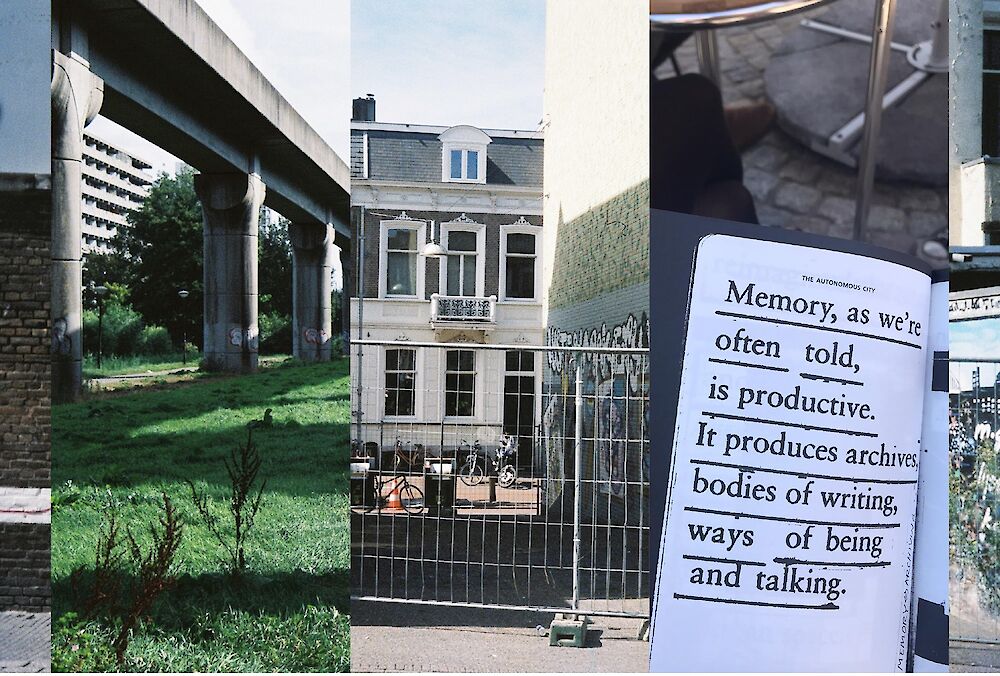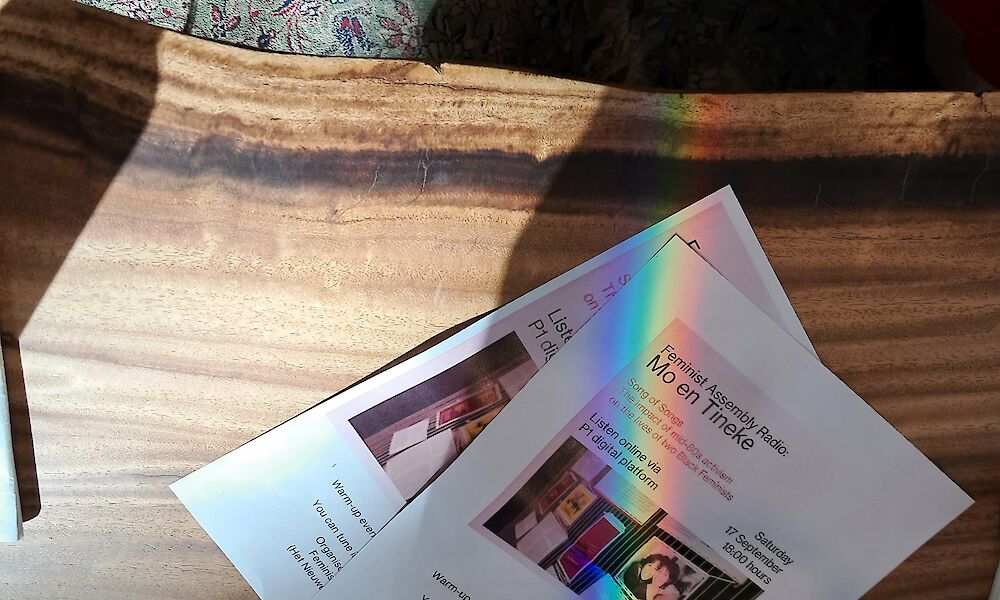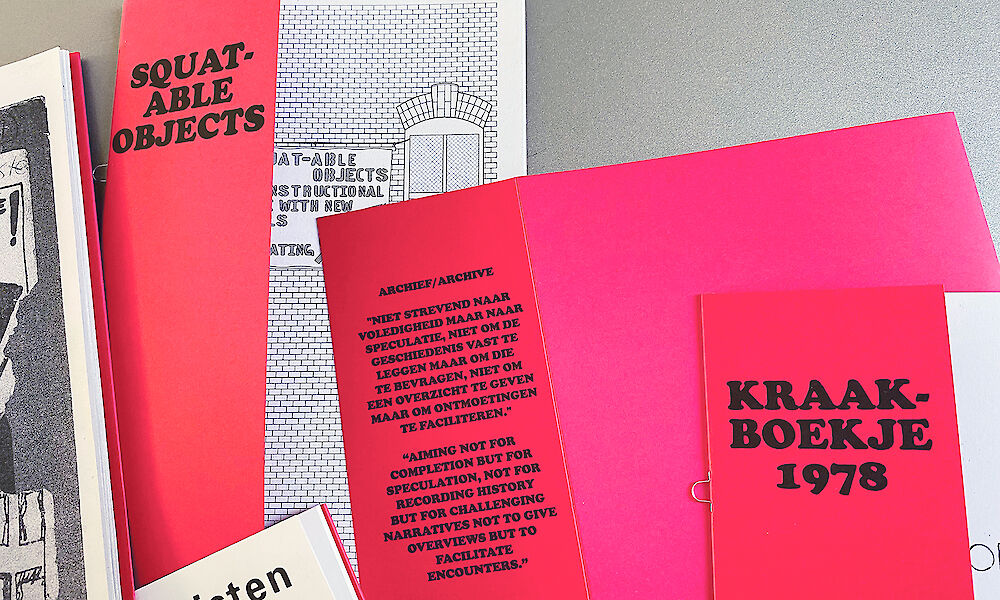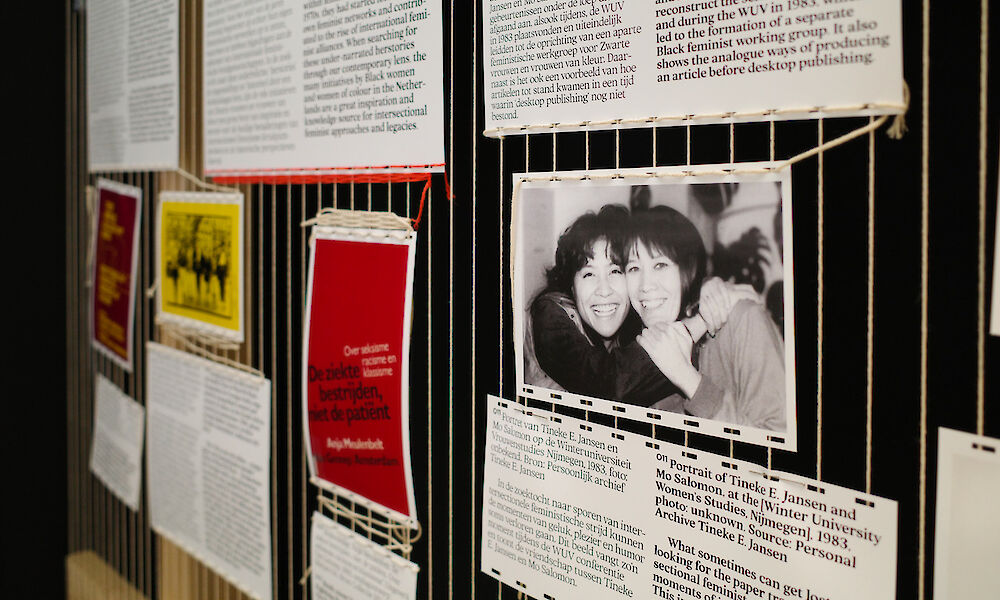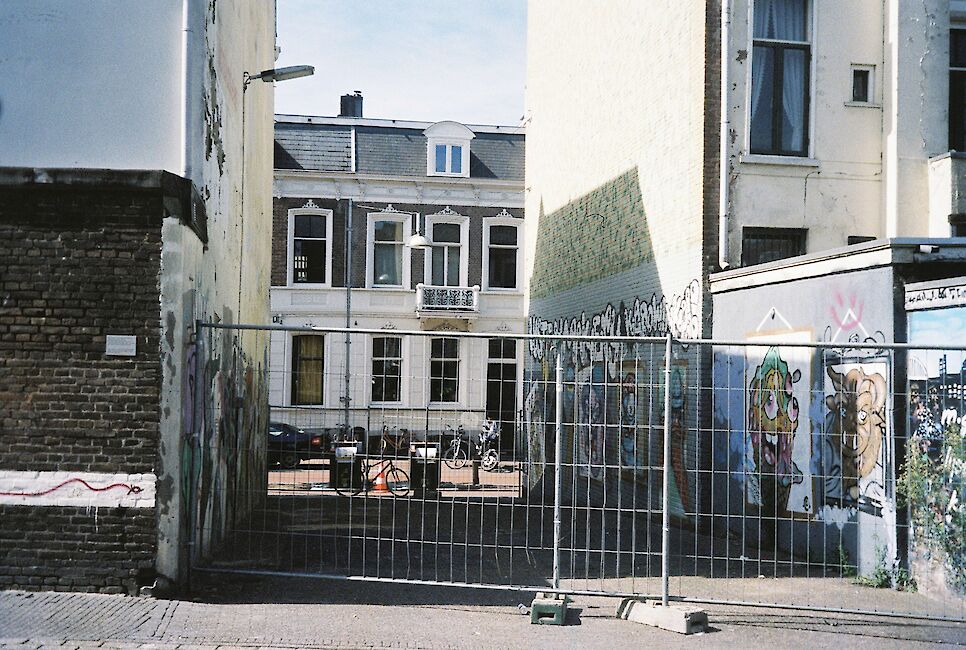
SMET’s repurposing and mindful usage of everyday (production) materials, translate situated narratives into accessible concepts. Their engagement in (self) publishing and spatial intervention results in a multi-disciplinary approach, seeking to transform theory into action.
With their first project, titled Shelter In Place, commissioned by Hotel Maria Kapel (2020), they started their research focusing on squatting histories, DIY cultures and ideas that exist and thrive on the margins, or as Fred Moten calls it “the not-in between” space. These are ideas that flourish, not because of their visibility or institutional recognition, but because they happen out of sight, arising out of urgencies. The ecology of grassroots initiatives often proves a lifeline for several, underprivileged communities, as well as a (living) archive of past and present knowledge. To caringly and carefully tap into the sources of resistance, and channeling these actions into current-day inspirations, characterizes SMET’s work.
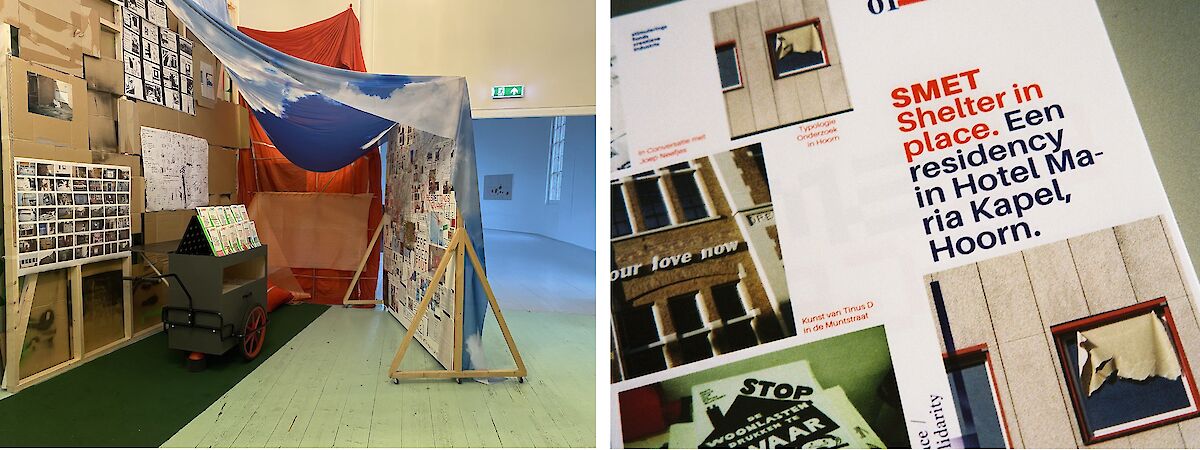
Shelter In Place
Shelter In Place explored the different aspects of shelter within the locality of Hoorn. SMET created a mobile, alternative ‘tourist’ info booth collecting hidden (his)stories. In preparing and executing this, they engaged with different, local communities and set up a series of creative workshops to engage local concerns and minor histories. These workshops often also introduced the participants (of various ages, and often from a working-class background) to an institutional art-space (Hotel Maria Kapel). Bringing together their info-booth and research, SMET built a physical installation during the Missing Homes group exhibition, its aesthetics inspired by different shelter building techniques.
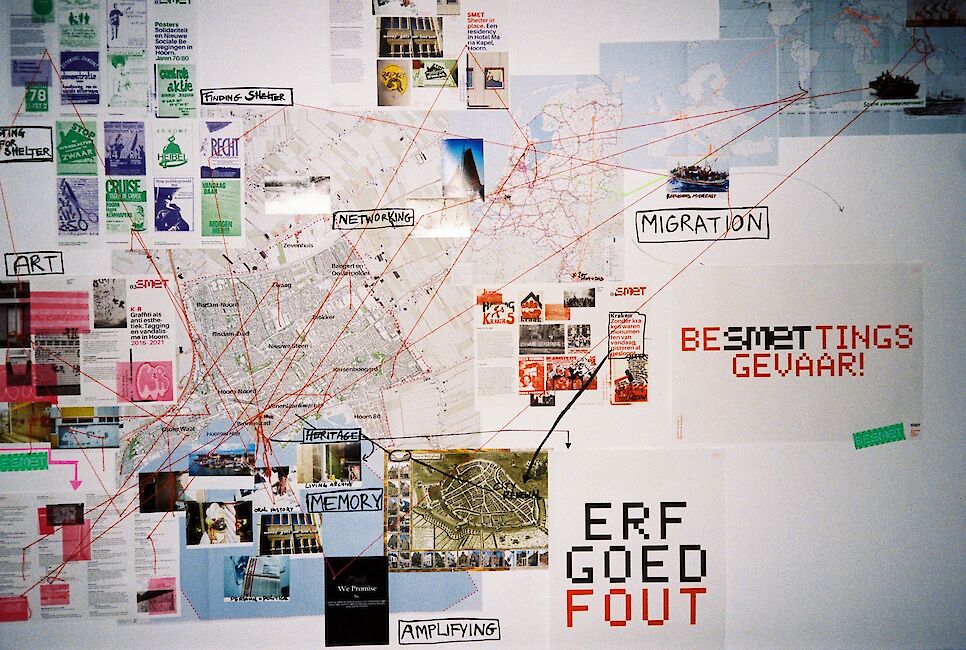
Bijlmer
For the Black Archives Bijlmer project DSGN-IN – its brief a decolonial design study of inclusive area development and decolonial architecture for Amsterdam Southeast – SMET chose to refuse the implicit prompt of a design solution, which often is the direction of design solution-thinking. How could we think differently about the Bijlmer, as a neighborhood with ample, yet unrecognized, sources and sites of development? Their research centred the voices and legacies of past and present actors that fought in various ways for the existence of their constituencies. With their project The Not-In Between Space, SMET proposed to (temporarily) squat the public space with local children of and a queer art collective as co-creators. In this, they sought to recenter the agency of local communities and highlighting the potential of the mostly unused, public space and landscapes of the Bijlmer. SMET stood boldly for the necessity of amplifying past histories of the Bijlmermeer in order to inspire its residents with these activities.
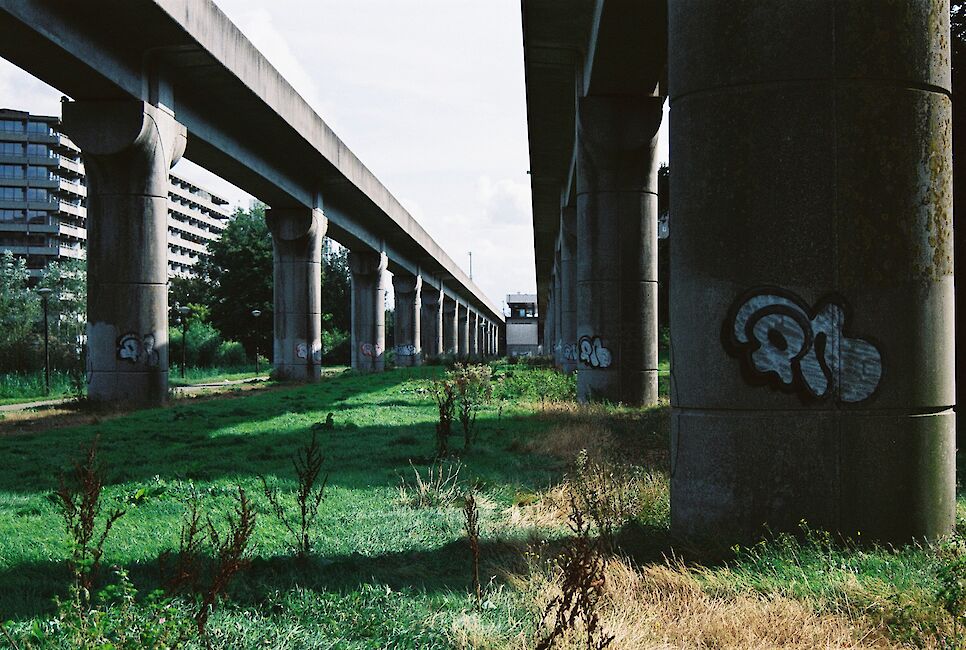
What About The Real Audience?
For Biënnale Gelderland 2022, SMET aims to unfold and propagate left-field knowledges, tirelessly and in huge numbers, populating the ‘public’, enabling other political imaginaries than the current neoliberal market ideology. From these imaginaries, refusals, and alternative utopias, communities can build/are already building different tools, as they seek to counter oppression in the wake of the struggle for the right to the city.
Nijmegen
Two impactful events in Nijmegen's history are unlikely interlinked: The ‘friendly fire’ bombardment at the end of the Second World War, scarring the city, and the Pierson riots, the most violent squat-eviction in Dutch history. Nijmegen was facing a growing population parallel to a huge post-war housing shortage. The city’s priority was on (re)building new homes for its citizens, echoing national demands. The new city planning left a vacuum in the neighborhoods, around the city center like Bottendaal and Nijmegen Oost, exacerbating the scars. The dilapidation of these neighborhoods became a fertile ground for resident action committees and squatters by stopping its demolition and demanding better and safe homes. Nijmegen, next to Amsterdam became the capital squat city of The Netherlands. The current (continued) existence of a rich (cultural) network in Nijmegen is proof of this.

Squatting
When researching Dutch public space, architecture, urbanization, and processes of gentrification it is hard to ignore the (historical) role of squatting. Its various movements appropriate space as both a self-signifier and a tactic to address the problems (and possible answers) of the housing crisis, skewed ownership structures, asymmetric urban renewal, and the commodification of public space. Squatters’ claims counter the exclusion of many social groups from the city’s urban core and provide them with non-commercial and self-managed services, dwellings, social encounters, and opportunities for political mobilization. This fundamentally engages Lefebvre’s concerns around the right to the city: the struggles to inhabit, appropriate, and recreate the city. These achievements of self-organization, appropriation and collectivity are an inspiration for generations to come, especially in times of hyper-individualism, diminished access to public space, and the continuing (artificial) housing shortage.
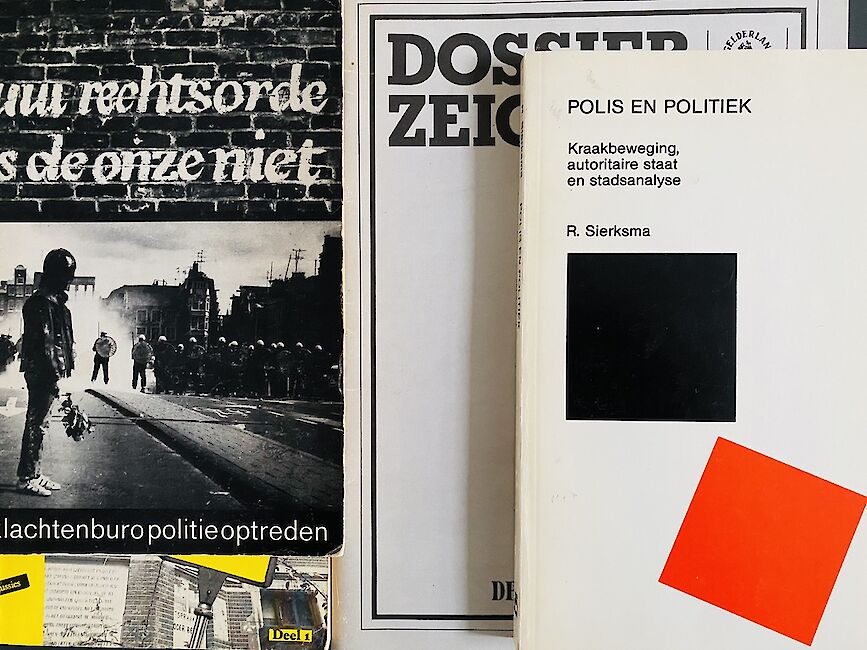
Activating the Archive
SMET does not limit their scope of research and intervention to the squatting movement, although it seems to have become a red thread within their body of work. Feminist herstories, African and Asian diasporic legacies, youth subcultures, and queer cultures are subjects of (embodied) interest, figuring in their contribution to the Biennale Gelderland 2022.
The Archive visually displays SMET’s research processes and results. SMET researched other ecologies of knowledge within the locality of Nijmegen and abroad. During their residency period, they have collected (hidden) (her)stories, culminating in a plurality of voices to be included in the archive. They take the archive as a collective, collaborative platform, one of many nodes and a place to facilitate encounters. Artists have been invited to activate the archive, intersecting it with their various practices, from performances to art publications, tattooing, graffiti murals, and video-and sound experiments. The archive is thus not seen as a static entity but a work in progress – open-ended.
